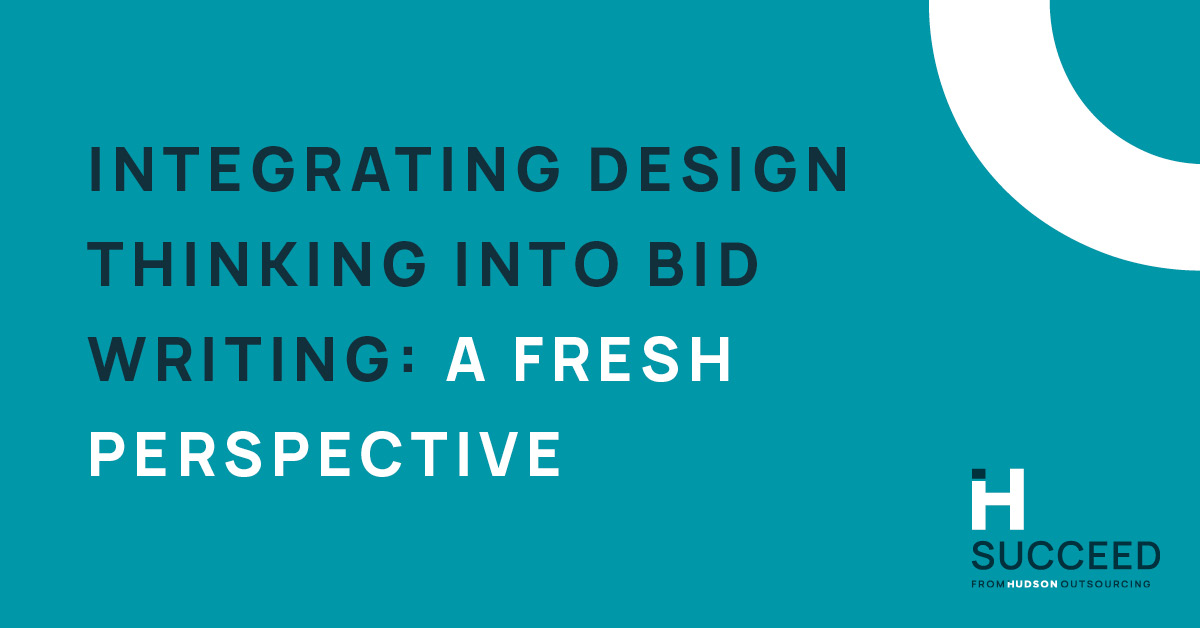
In the competitive world of bid writing, standing out from the crowd is essential. One of the most innovative ways to approach this challenge is by integrating Design Thinking into the bid writing process. This creative and user-centered approach goes beyond traditional methods, encouraging bid teams to think from the perspective of the client, focus on problem-solving, and present solutions that truly meet the client’s needs. Design Thinking can transform a standard bid into a compelling, solution-driven narrative that resonates with evaluators.
What is Design Thinking?
Design Thinking is a human-centered approach to problem-solving that emphasises understanding the user’s needs, generating innovative ideas, and testing solutions in an iterative process. Originating from the design world, it has now been widely adopted across various industries to tackle complex challenges creatively. It involves five key phases: empathise, define, ideate, prototype, and test. Applying these principles to bid writing can lead to more engaging, client-focused bids that increase your chances of winning.
Why Design Thinking in Bid Writing?
Bids are not just about offering the lowest price or showcasing technical prowess—they are about demonstrating how your solution will meet the client’s unique needs and solve their specific problems. Traditional bid writing often focuses too heavily on the technical details or corporate accomplishments, missing the opportunity to truly connect with the client on a human level. Design Thinking brings empathy, creativity, and user-focus to the forefront, encouraging bid teams to think beyond the standard template and craft a solution that resonates with the client’s values and pain points.
How to Integrate Design Thinking into Your Bid Writing Process
-
Empathise with the Client’s Needs
The first step in Design Thinking is to understand and empathise with the client. In the context of bid writing, this means going beyond the tender requirements and digging deeper into the client’s objectives, challenges, and pain points. Research the client’s industry, mission, and values. What are their long-term goals? What challenges do they face that you can address? By focusing on the client’s needs and not just the technical specifications, you can craft a bid that speaks directly to their problems and aspirations.
-
Define the Problem
After empathising with the client, the next step is to clearly define the problem that your bid is addressing. This should not just be a restatement of the client’s tender requirements, but a well-articulated definition of the core challenge they are facing. For example, rather than simply stating, “The client needs a new IT system,” your problem definition could focus on the larger issue: “The client needs an IT solution that enhances productivity and integrates seamlessly with their current processes, reducing operational bottlenecks.” By reframing the problem, you demonstrate a deeper understanding of the client’s needs.
-
Ideate and Generate Creative Solutions
Once the problem is defined, it’s time to ideate—brainstorming creative ways to solve the client’s challenges. In traditional bid writing, teams often default to standard solutions or previous templates. With Design Thinking, you are encouraged to think outside the box. Gather input from different team members, especially those who may not usually be involved in bid writing, to generate fresh ideas. The goal is to come up with innovative solutions that differentiate your bid from competitors.
-
Prototype Your Ideas
In the context of bid writing, prototyping doesn’t mean creating physical models, but rather sketching out how your proposed solution will work in practice. This could involve creating mock-ups of workflows, diagrams, or implementation plans that clearly show how your solution addresses the client’s problem. Visual aids, roadmaps, and timelines can make complex solutions easier to understand and provide evaluators with a clear sense of how your offering will be implemented. The prototype phase helps you test different approaches and refine your ideas before presenting them in the bid.
-
Test and Refine Your Bid Content
Before submitting the final bid, “test” it by seeking feedback from colleagues or trusted stakeholders who can review the proposal from a fresh perspective. Are the client’s needs clearly addressed? Does the solution offer tangible benefits? Are there any areas that could be clarified or improved? Use this feedback to refine and strengthen your proposal, ensuring that it is clear, compelling, and client-focused.
Benefits of Design Thinking in Bid Writing
-
Client-Centric Bids:
Design Thinking prioritises the client’s needs and focuses on providing solutions that directly address their challenges. This approach helps create bids that resonate more deeply with evaluators.
-
Creative and Innovative Solutions:
By encouraging brainstorming and creativity, Design Thinking allows you to present innovative ideas that can differentiate your bid from competitors.
-
Clear, Visual Communication:
Prototyping ideas and using visuals such as diagrams and timelines can make complex solutions more digestible and engaging, helping your bid stand out.
-
Enhanced Collaboration:
Design Thinking fosters collaboration across teams, encouraging input from diverse perspectives. This can lead to a more comprehensive and well-rounded proposal.
-
Iterative Improvement:
The iterative nature of Design Thinking allows for continuous refinement, ensuring that the final bid is polished, clear, and compelling.
Conclusion
Integrating Design Thinking into your bid writing process can transform how you approach tender submissions, making your proposals more client-focused, innovative, and engaging. By empathising with the client, defining the problem clearly, and generating creative solutions, you can develop bids that not only meet the tender requirements but also stand out as solutions that truly solve the client’s challenges. At Hudson Outsourcing, we believe in pushing the boundaries of bid writing by incorporating innovative approaches like Design Thinking to help our clients win.
Related Blog: Leveraging Data Analytics for Improved Bid Success Rates




